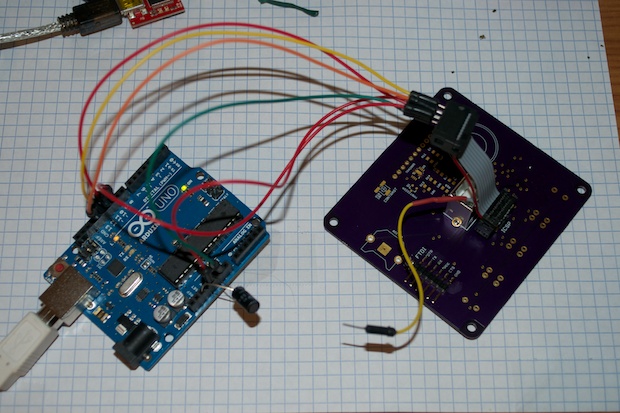
Then we have created a pointer variable named My_timer of the type hw_timer_t in order to configure the timer. Let’s discuss each part of the code.Īt the global variable area, we have defined the LED pin as GPIO21.

You will observe that the LED is blinking at a rate of 1Hz. ESP32 Code to Blink an LED with Timer Interruptĭownload the code attached to the bottom of this article and upload it to the ESP32. Here is the actual circuit connected on a breadboard as per the circuit diagram.Ĭonnect the Anode of the LED to the GPIO21 and connect the cathode to GND through a 220 Ohms resistor. To do that, make the connections on a breadboard as shown in the below circuit diagram. But instead of using delay, we are going to use timer interrupt. In this example, we are going to test a LED blink program. We can change the timer intervals by changing this count value ESP32 Timer Interrupt Example – Blinking an LED This counter will reset once it reaches a set value and it will trigger an interrupt. The timer uses a counter which counts at a certain speed depending upon the clock frequency and the prescaler value. You can attach the desired timer to an interrupt and can assign an ISR for the same Q. Commonly Asked Questions about ESP32 Timer Interrupts Q. This process will repeat for every Timer Interrupt. Once the ISR is finished executing, the microcontroller will resume the main loop from where it was paused. Whenever a timer interrupt is generated, the microcontroller will pause the main loop and will proceed with the execution of the Interrupt Service Routine or ISR. The controller will execute the main loop continuously. For that, we will configure and attach a particular timer interrupt to a specific ISR in the setup function. Just like a hardware interrupt the timer interrupts are also the best way to run non-blocking functions at a certain interval. The following image shows the process flow with a timer interrupt. The ISR is then configured to trigger after a specific number of ticks. The prescaler is what the above frequency is divided by to form a "tick" of the timer (increment its counter). Timer speed (Hz) = Timer clock speed (Mhz) / prescalerįor example, the speed of a timer in an ESP32, which is running at a clock frequency of 80MHz, will be 80MHz or 8000000MHz for a set prescaler value of 1 and will be 1MHz or 1000000Hz for a prescaler value of 80. The timer speed can be determined by the following formula. Here is an image demonstrating the Timer concept.Īs these timers are hardware-based, all timing is related to the clock of the timer. Once triggered, they will interrupt the thread of execution after the current instruction completes, will call the ISR, and will return to the next instruction from where it left off when it has finished, just like hardware or external interrupt. They are similar to external interrupts, but instead of being triggered by an external event, they are triggered by a timer. Timer interrupts allow you to perform a task at very specifically timed intervals regardless of what else is going on in your code.


#Arduino timer interrupt causes code to fail with gps software#
The timer interrupts are the software interrupts generated by the timer. Timer Interrupts are an effective way to ensure timed events happen to the millisecond, allowing for fine-tuned clock or PWM operations, or just supplying a reliable pulse to an LED. They are all 64-bit generic timers based on 16-bit prescalers and 64-bit up / down counters which are capable of being auto-reloaded. Each group has two general-purpose hardware timers. The ESP32 chip contains two hardware timer groups. The timers in the microcontroller are controlled by special function registers that are assigned for timer operations. This characteristic of the timer is used for many applications. Most microcontrollers have inbuilt timers which are used not only to generate time delays but also as a counter. It is like a simple clock that is used to measure and control time events providing a precise time delay. There are times when you need something to happen on time and that’s where timers and timer interrupts come to play.


 0 kommentar(er)
0 kommentar(er)
